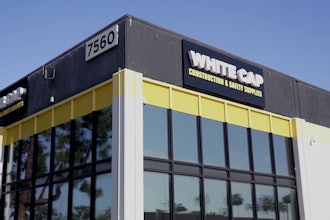Lower unemployment, bankruptcies and foreclosures in March reduced the nation's economic stress to its lowest point this year, according to The Associated Press' monthly analysis of conditions around the country.
More than 85 percent of the nation's 3,141 counties and every state but two — Louisiana and South Dakota — enjoyed better conditions in March than in February, the AP's Economic Stress Index showed.
Manufacturing activity, a major driver of economic growth since the recession ended in June 2009, has helped ease hardship in the Great Lakes states and Indiana over the past 12 months — more than in any other region.
By contrast, Louisiana, Iowa and the Mountain states of Idaho and Montana have suffered the sharpest increases in stress, year over year.
Post-Hurricane Katrina construction projects are winding down in Louisiana. The Mountain states have felt the effects of government job cuts more severely than elsewhere because of their small populations. And Iowa has suffered an increase in foreclosures.
The AP's index calculates a score from 1 to 100 based on unemployment, foreclosure and bankruptcy rates. A higher score signals more economic stress.
The average county's Stress score was 10.5 in March, the lowest level since December. It was 11 in February and 11.5 a year earlier.
Under a rough rule of thumb, a county is considered stressed when its score exceeds 11. Using that rule, less than one-third of the counties were stressed in March, down from nearly 40 percent in February.
Unemployment in March declined or was unchanged from February in every state but South Dakota and in nearly 90 percent of the counties. Bankruptcies dipped in 43 states and 70 percent of the counties. And foreclosures dropped in 44 states and in more than 70 percent of counties.
In March, economic strains eased the most in counties with heavy concentrations of workers in manufacturing, retail and temporary staffing jobs. By contrast, stress rose the most in counties with many workers in wholesale trade and mining.
The government reported last week that the overall economy's growth slowed sharply to an annual rate of just 1.8 percent from January through March. That was down sharply from a 3.1 percent rate in the final three months of 2010.
Many economists think the slowdown will be temporary. Nariman Behravesh, chief economist at IHS Global Insight, thinks growth will rebound to nearly 3 percent in the current April-June quarter. He predicts it will strengthen further to around 3.5 percent in the second half of the year.
The unemployment rate, now 8.8 percent, will dip possibly as low as 8 percent by year's end, Behravesh says. He says the economy should be able to withstand this year's jump in gasoline prices.
"Gasoline prices at around $4 per gallon will be a headwind, but they would have to go quite a bit higher to derail things," Behravesh said.
Among all the most economically precarious states, stress levels declined in March. Nevada was again the most stressed state, with a score of 20.67. Next were California (16.19), Florida (14.52), Michigan (14.23) and Arizona (14.23). Still, thanks to gains in tourism, stress has declined more sharply in Nevada and Florida than in any other states over the past six months.
North Dakota remained the economically strongest state with a score of 4.89. It was followed by Nebraska, (5.7), South Dakota (6.27), Vermont (6.51) and New Hampshire (6.85).
Expanding production of steel, autos and heavy equipment has helped many Midwestern states. Even Elkhart County, Ind., which as a poster child for the recession drew a visit from President Barack Obama, has been benefiting from manufacturing — and not just from its bedrock industry of recreational vehicles.
Electric vehicle maker Think is opening a plant in Elkhart. And the county's economic development board is negotiating to land 11 other projects from companies in Britain, China and Norway that want to expand in the United States, said Dorinda Heiden-Guss of Elkhart's Economic Development Corp.
About 40 percent of workers are employed in manufacturing in Elkhart County, whose Stress score was 13.36 in March, down from 22.28 two years ago. The county's notoriety as a casualty of the recession might have put it on the radar of the international companies now looking to open plants there. The greater availability of financing also helped.
"Banks loosened up," said Heiden-Guss.
Louisiana has endured the sharpest rise in stress over the past year. With a Stress score of 9.55 in March, the state was still faring better than the nation as a whole. But Louisiana has suffered job losses in construction. And tougher federal scrutiny since the BP oil spill has led to state government cuts and the loss of more than a half dozen drill ships.
"We're still way better off than the national economy," said Loren Scott, a Baton Rouge-based economist. "But we're coming down, on the construction side, from extraordinary peaks."
The most-stressed counties with populations of at least 25,000 were concentrated in California and Nevada, two of the states with the highest unemployment and foreclosure rates. At the top was Imperial County, Calif., with a Stress score of 28.52. It was followed by Lyon County, Nev. (27.86), Sutter County, Calif. (26.42), Merced County, Calif. (26.18) and San Benito, Calif. (25.2).
The healthiest counties were Ellis County, Kan. (4.06), Buffalo County, Neb. (4.43), Arlington County, Va. (4.53), Ward County, N.D. (4.54) and Burleigh County, N.D. (4.65).
___
Schneider reported from Orlando, Fla., Crutsinger from Washington.


















